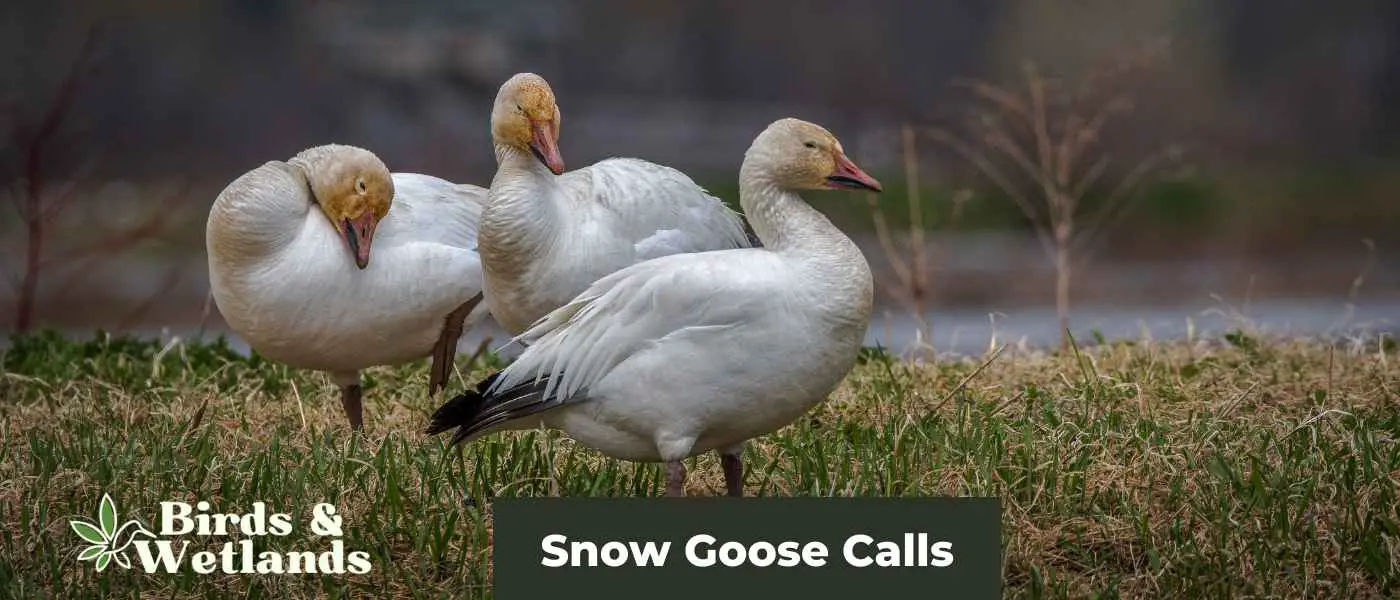The first thing that comes to mind when you think of goose calls is their loud honking sound. But did you know that there are different types of calls depending on the situation? To name a few, there are breeding calls, alarm calls, and contact calls. In this post, we’ll look at the various types of snow goose calls and what they mean.
What kind of sounds do snow geese make?
Snow geese are well known for their distinct calls, especially during the breeding season. These calls can range from low-pitched gurgles to high-pitched honks, depending on a variety of factors such as the time of day, other environmental factors such as temperature and wind speed, and the activity level of the goose in question.
The main call, made by both males and females, is a nasal, one-syllable honk given at any time of day or night, in the air or on the ground.
Snow geese are generally more vocal during the day than at night when they become relatively quiet. Whether sitting on their nests or flying in formation over their territory, they may also make different calls.
You’ll soon learn to sound like a small flock of feeding snow geese at a refuge or wildlife management area by adding a variety of wahs and Whitt’s in different volumes, pitches, and cadences.
There are several ways that snow geese communicate with one another and express various emotions and desires through their varied and complex vocalizations. These interesting birds never fail to fascinate you with their unique blend of sounds and noises, whether you’re listening to them in passing or trying to track them down with your microphone.
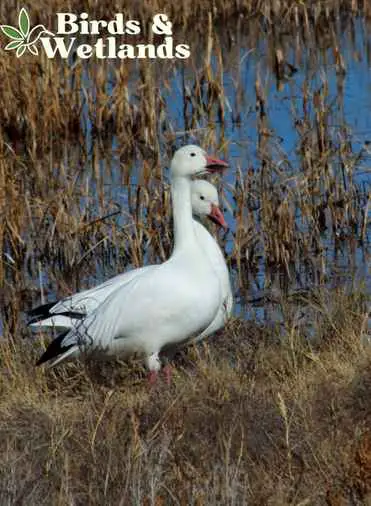
How to imitate snow goose calls?
Maybe you don’t have such a strong aversion to geese, and you just want to get a jump start on something that happens seasonally.
Begin by forcing air from your diaphragm into the caller to imitate a snow goose call. The sound you want to make should sound like fogging a mirror or a quarterback barking “hut hut” from their gut. You can change the pitch by opening and closing your hands around the caller.
Another method for producing different pitches is to use your tongue to block off sections of the caller. For example, you would block off more of the caller with your tongue to make a higher pitch. You would block off less of the caller with your tongue to make a lower pitch.
Experiment with various sounds and pitches until you find one that sounds similar to a real snow goose call. Blowing air out of your cheeks, as if you were blowing out a candle, will not produce the sound quality required to use a duck or goose call effectively.
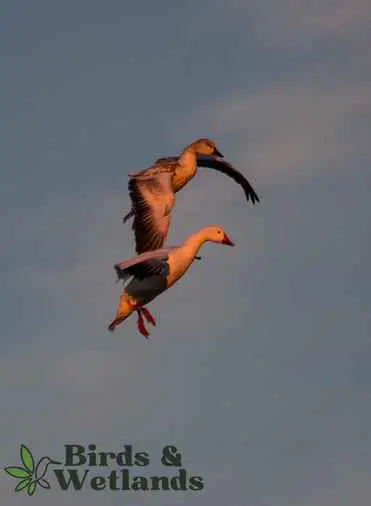
What is a flight call?
The sky can appear chaotic at first glance, with flapping wings and whirling feathers. However, if you look closely, you may notice patterns. Birds occasionally call out as they fly overhead, uttering long, high-pitched cries almost like a song.
A flight call is a vocalization that helps birds stay together in large flocks by acting as both a marker for other birds and an invitation for newcomers to join the flock. Furthermore, flight calls can help alert other flock members to potential threats such as predators such as foxes and snakes or inclement weather.
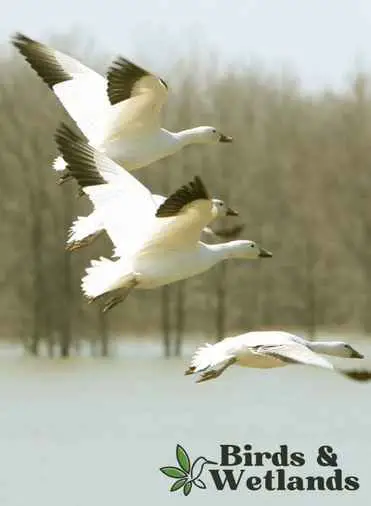
What is a brood call?
A brood call is a short, quiet series of notes used by parents to gather goslings. This type of call keeps the family together while away from the nest. It is used when the parents are not present at the nest.
Depending on the situation, the intensity of the call varies. For example, the brood call will be more intense if there is danger nearby. The brood call will be less severe if the family is simply relocating. The brood call is an important part of parenting for geese and other animals. It aids in keeping the family together and safe.
Other waterfowl species such as swans and ducks also make brood calls.
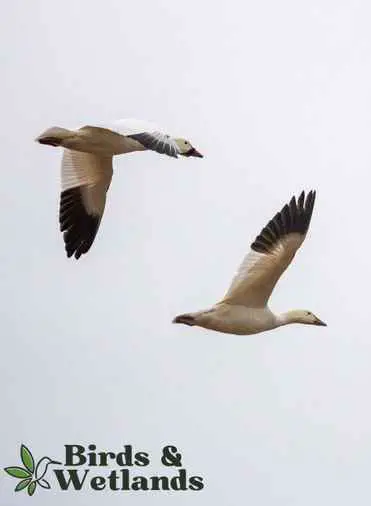
What is a distress call?
Geese are known for their loud and often irritating calls, but some of the sounds they make can actually help other animals. One example is the high-pitched shriek of their distress call. This sound can be heard from a long distance and is used to warn the rest of the flock and other geese of potential danger.
Another way geese communicate is through the loud hiss of their threat display. This sound is used to ward off potential predators or other animals.
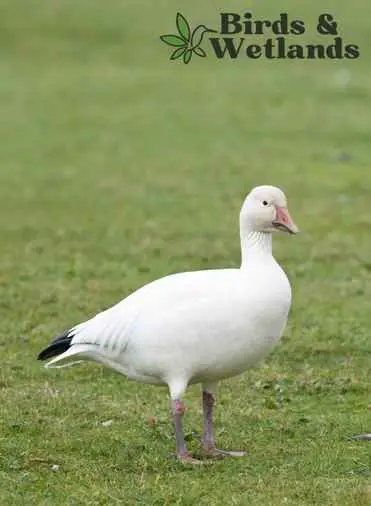
What kind of sounds do Canada geese make?
Honks, barks, and cackles are some of the loud vocalizations made by Canada geese (Branta canadensis). They also hiss on occasion, especially when threatened.
These sounds aid in the geese’s communication and coordination of activities. For example, the honking sound is commonly used to signal alarm or danger, whereas the cackling sound is frequently used during courtship rituals.
For instance, when a goose pair meets, the male or gander continuously honks at the female goose, who responds by honking back. As the two synchronize, they eventually sound like a single bird.
What kind of sounds do other geese make?
Most geese can bark, cackle, hiss, and even whistle. The honk is the most common and loud sound made by geese.
Honking is a form of communication among geese that can be heard up to a mile away. Geese also use honking to alert other animals that they are nearby.
Another common sound made by geese is barking. It is frequently used as a form of threatened aggression or to frighten off predators.
Cackling is a softer sound made by geese when they are happy or relaxed. You will hear geese hiss like a cat if they are angry.
Hissing like a cat is typically heard only when geese are angry or scared. Finally, whistling is a friendly greeting between geese who are well acquainted.
Interestingly, many geese that live in urban parks and ponds have become accustomed to humans that they learned if they honk, humans will feed them. Additionally, many geese make sounds to attract a mate.
Geese are fascinating creatures with a wide range of vocalizations. When you see a goose, pay close attention and see if you can identify the different sounds it makes.
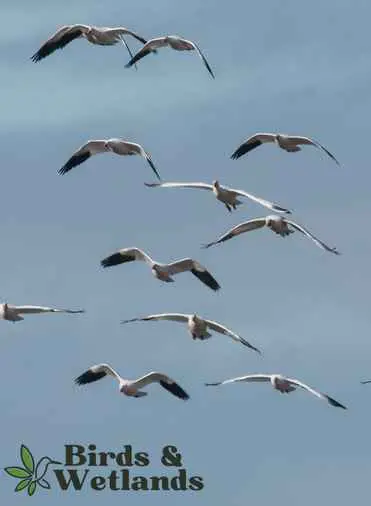
Key Points
Snow geese are known for their distinct calls, which can range from low-pitched gurgles to high-pitched honks.
The main call is a nasal, one-syllable honk given at any time of day or night, in the air or on the ground.
Snow geese are generally more vocal during the day than at night and may make different calls depending on whether they’re sitting on their nests or flying in formation.
Flight calls help birds stay together in large flocks by acting as both a marker for other birds and an invitation for newcomers to join the flock.
Distressed calls are high-pitched shrieks that serve as a warning for the flock and other geese of a potential predator like a fox or humans.

